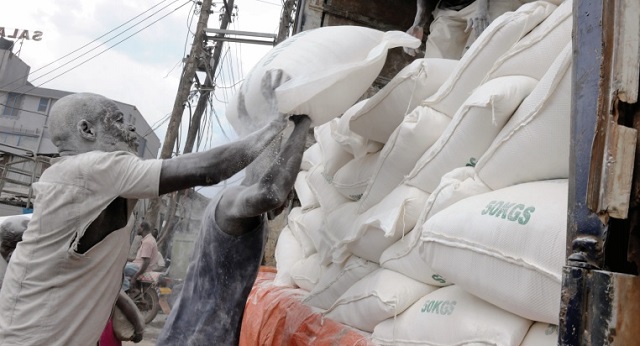
So why might there be hunger tomorrow?
Kampala, Uganda | RONALD MUSOKE | On April 14, this year, Betty Atyeno, a 30 year old pregnant mother from Atali village in Abako Sub-County, in the northern Uganda district of Alebtong lost her grip – up a mango tree. She plunged metres down. She died the following day.
Atyeno had climbed the mango tree to pick mangoes for her five hungry children, according to the Daily Monitor which reported the story. The children had gone a full day without food.
Atyeno had separated from her husband after a dispute over how the hunger that was sweeping through most of northern Uganda at the time and she had returned to her place of birth with her children. The story of her fate has come to symbolise the hunger crisis that often grips this region, leaving millions of people desperate.
By March this year, a report on National Food Security Assessment launched by Prime Minister, Ruhakana Rugunda in Kampala, noted that 26% of Uganda’s population was facing “stressed food insecurity”—implying that the affected people had just enough food but were unable to afford other essential food expenditure.
The report showed close to 11 million people experiencing acute food insecurity; of which 1.6 million were in a crisis situation.
It was a carry-over from late 2016, when people in 45 districts across the country were assessed as being on the brink of a food crisis and disaster should the September-December planting season fail.
In response, the government committed billions of shillings for relief food. The Office of the Prime Minister announced that it had procured about 60,000 bags of maize flour and 15,000 bags of beans and delivered them to the most severely affected populations in Karamoja, Teso, Bukedi and the cattle corridor; including Isingiro District. Isingiro was surprising because, for many years, it had been one of Uganda’s food baskets. The Chinese government also donated 119,660 bags of 50kg each of rice distributed across 80 districts.
Luckily, as the year progressed, the weather improved and the rains came. The food situation improved. James Bataze, a senior meteorologist at UNMA told The Independent on Dec. 14 that most parts of the country that the weather authority predicted would have good rains actually registered good rains. As a result most of Uganda has registered good harvests.
Jackson Lakor, the Gulu District Production Officer attributes the current good harvest to sufficient rains Gulu received in the latter part of 2017.
Unlike the first season of the year (March—June), the second one (July to date) has been good, he said. As the year ends, he says, farmers are busy harvesting groundnuts, maize, and beans. They will soon harvest simsim and pigeon peas.
Robert Oluge, the District Agriculture Officer for Lira in north-central Uganda also told The Independent on Dec. 15 that the harvest in his areas of supervision looks good in Otuke, Koole and Oyam districts. Farmers have harvested close to 70% of maize and what remains are potatoes, cassava and sunflower, Oluge said.
In the western district of Kasese, Julius Rukara, who is the Agriculture Officer there says farmers have registered a bumper harvest of maize— Kasese’s major food staple. Rukara said the maize prices have plunged. A kilogramme now sells for as low as Shs 300-500. Last season, a kilo went for Shs 1000-1500.
“As we go into the New Year, we don’t have any problem with food challenge here,” he told The Independent. Still, Rukara says because of the high levels of poverty in the district, some farmers tend to sell everything.
“So, as much as there is a maize glut,” he said, “In a few months, some households will slide back and report food scarcity challenges.”
“So if we don’t have good seasonal rains next year, we will have the same problems,” he added. Lakor in Gulu has the same fear. He says neighbouring districts of Kitgum and Lamwo have not had a good harvest.
“Business agents from there will be camping in Gulu to buy the food in the next few months,” he said.
So, much as most of the country expects good harvests, it does not mean Ugandans might not suffer from hunger next year. This raises one question: Why has hunger become a perennial problem in a country that claims agriculture as the backbone of its economy?
Going beyond drought, pests
To explain Uganda’s desperate food situation early this year, the government blamed a prolonged dry spell which hit the country from March to August 2016, thanks to the El Nino weather phenomenon.
Farmers who had planted crops according to the usual first season calendar of March never witnessed germination. Much of the crops planted later after the rains arrived were also scotched by the sun due to below average rainfall. Prices rose sharply for the little food harvested.
The arrival of the crop-eating caterpillars; known as the American Fall Army worm towards the end of 2016 worsened the already desperate situation. By March this year, the pests had ravaged 20 districts, mostly in central and western Uganda; attacking 40% of the maize in some of these regions.
The maize farmers were the worst affected as the Ministry of Agriculture predicted that 11% of Uganda’s annual 4 million tonnes would be wiped out. Central districts of Masaka, Mubende, Mityana and western region’s Kibaale, Masindi, Kiryandongo, Kamwenge, Kyenjojo, Rwimi, Kasese and Kabarole would be worst hit. But so would be Kapchorwa, Mbale, Kamuli, Jinja, Iganga in eastern region.
But Doreen Chemutai, a lecturer in the Department of Public Administration and Management at Gulu University who has written a paper on the hunger problem, differs. Her paper titled `Political Will, Policy Implementation and Food Access in Uganda’ which was published in the journal `International Proceedings of Chemical, Biological and Environmental engineering,’ blames the government’s action and/or inaction in determining people’s access to food.
“Political unwillingness to interfere in the liberal food market has led to the selloff of all foods with no stocks left at household, district and national level,” she says, “Politicians’ self-interest often overrides their actions and decisions for the public good.”
For Agnes Kirabo, the executive director of Food Rights Alliance, a coalition that brings together civil society organizations working in the field of sustainable agriculture and food security in Uganda, the problem is that the rural economy has collapsed; turning food crops into cash crops.
“The food is bringing more ready cash to the households than the traditional cash crops yet the rural areas are producing little food to feed the ever growing demand in urban areas,” she told The Independent on Dec. 14.
 The Independent Uganda: You get the Truth we Pay the Price
The Independent Uganda: You get the Truth we Pay the Price



Among those arguments, It must not be forgotten that Uganda is hosting refugees from Southern Sudan, DRC, Burundi, etc. Who are among the consumers of the food produced with a big population of dependants in Uganda, who are not productive but big consumers and food market in S. Sudan and Kenya are contributors of food shortages in Uganda
It should be internationally enacted that ” Any country that by internal violence or fear of violence, compels its citizens to seek asylum in another, must be debited and made to pay for their upkeep.
Punitive and other measures should be provided so that states will think twice before unleashing violence on their people. Accordingly,if a non-state party is cause, same punitive measure should be applied swiftly,severely and unsparingly. If however, certain people,out of personal greed and political ego, without show of violence to themselves just migrate to other country, the country of origin will be not be held liable, so should be fugitives from justice.